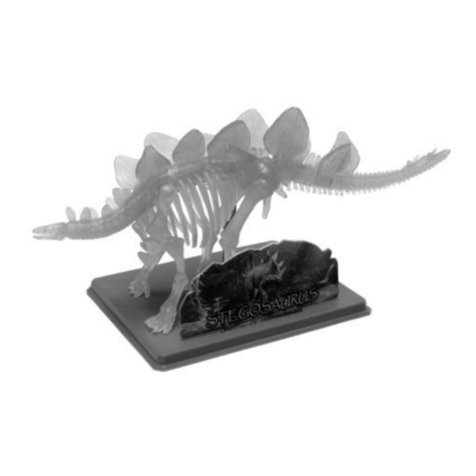
RC Spider
Warning! Not suitable for children under 36 months. Choking hazard. Only for use by
children over 8 years old. To be used solely under the strict supervision of adults that have
studied the precautions given in the experimental set. Hair entanglement may result if the
child’s head is too close to the motorized unit of this toy. This toy contains functional sharp
point –on the component leads. Do not short-circuit the battery terminals and motors, which
may cause overheating. Do not lock the motor or other moving parts, which may cause
overheating. Use with care and only under supervision of adult.
Packaging materials are not toys. Please remove all packaging and packing tags/wires before
giving this toy to your child.
CAUTION!Take extra care during unpacking and use.
Please take note: As an extra precaution, check this toy regularly for signs of wear or damage.
Read the instructions carefully before use, then follow them and keep them for reference.
Warning! Do not short-circuit the battery terminals and motor, which may cause
overheating. The wires are not to be inserted into socket outlets.
Batteries required: 6 x AAA/LR03 (Not included)
IMPORTANT: Keep these instructions. DO NOT DISCARD.
1. Only adults should install and replace batteries.
2. Alkaline batteries are recommended.
3. If the device has not been used for a long time, remove the batteries.
4. Do not use rechargeable batteries.
5. Do not mix old and new batteries.
6. Do not mix alkaline, standard (carbon zinc) or rechargeable (nickel cadmium) batteries.
7. Exhausted batteries are to be removed from the toy.
8. Non-rechargeable batteries are not to be recharged.
9. The supply terminals are not to be short-circuited.
10. Only batteries of the same or equivalent type as recommended are to be used.
11. Batteries are to be inserted with the correct polarity.
12. Do not dispose of batteries in fire, batteries may explode or leak.
13. Batteries may explode or leak if misused.
If at any time in the future you should need to dispose of this
product please note that Waste electrical products should not be
disposed of with household waste. Please recycle where facilities
exist. Check with your LocalAuthority or retailer for recycling
advice.(Waste Electrical and Electronic Equipment Directive)
























